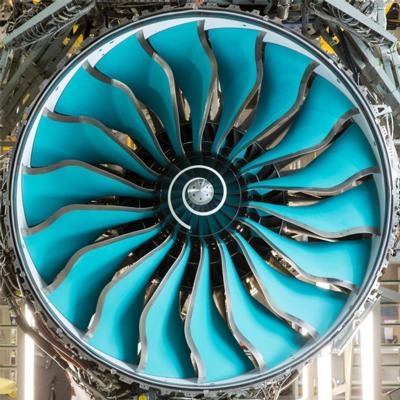Sun, Mar 02, 2014
Looks To Build On The Success Of The Trent Family
Rolls-Royce has shared details of its next generation of engine designs, which could be ready within ten years, featuring technology innovation designed to transform performance. The company has built a technology leadership position with its Trent family of engines, the latest of which, the Trent XWB, the company says is the most efficient engine flying today. Trent engines will continue in service for decades to come with 2,500 in service and more than 2,500 on order.

Rolls-Royce is continually innovating and, as part of that ongoing process, is looking to build on the success of the Trent family of engines with two new generation engine designs.
The first design, Advance, will offer at least 20 per cent better fuel burn and CO2 emissions than the first generation of Trent engine and could be ready from the end of this decade.
The second, UltraFan, a geared design with a variable pitch fan system, is based on technology that could be ready for service from 2025 and will offer at least 25 per cent improvement in fuel burn and emissions against the same baseline.
"These new designs are the result of implementing our ongoing technology programs," said Colin Smith, Rolls-Royce Director - Engineering and Technology. "They are designed to deliver what our airframe and airline customers tell us they need: even better fuel efficiency, reliability and environmental performance."
Both engine designs are the result of the ongoing research and development investment, of approximately £1 billion (approx. $1.67 billion) a year, which Rolls-Royce makes across its aerospace and non-aerospace businesses.
The designs will feature architecture and technology improvements, all currently at an advanced stage of development, that include:
- A new engine core architecture - to deliver maximum fuel burn efficiency and low emissions.
- A CTi Fan System - carbon/titanium fan blades and a composite casing that reduce weight by up to 1,500lb per aircraft, the equivalent of carrying seven more passengers at no cost
- Advanced ceramic matrix composites - heat resistant components that operate more effectively in high turbine temperatures.
- A geared design, called UltraFan, which will deliver efficient power for high-thrust, high-bypass ratio engines of the future.
(Image provided by Rolls-Royce)
More News
Aero Linx: Aviators Code Initiative (ACI) Innovative tools advancing aviation safety and offering a vision of excellence for aviators. The ACI materials are for use by aviation pra>[...]
Make Sure You NEVER Miss A New Story From Aero-News Network Do you ever feel like you never see posts from a certain person or page on Facebook or Instagram? Here’s how you c>[...]
From 2016 (YouTube Edition): Who You Gonna Call When You Have a Rocket Engine that Needs a Spacecraft? While at EAA AirVenture 2016, ANN CEO and Editor-In-Chief, Jim Campbell, sat >[...]
"In my opinion, if this isn't an excessive fine, I don't know what is... The odds are good that we're gonna be seeking review in the United States Supreme Court. So we gotta muster>[...]
Expedite Used by ATC when prompt compliance is required to avoid the development of an imminent situation. Expedite climb/descent normally indicates to a pilot that the approximate>[...]
 ANN's Daily Aero-Linx (04.30.25)
ANN's Daily Aero-Linx (04.30.25) ANN FAQ: Turn On Post Notifications
ANN FAQ: Turn On Post Notifications Classic Aero-TV: Agile Aeros Jeff Greason--Disruptive Aerospace Innovations
Classic Aero-TV: Agile Aeros Jeff Greason--Disruptive Aerospace Innovations Aero-News: Quote of the Day (04.30.25)
Aero-News: Quote of the Day (04.30.25) ANN's Daily Aero-Term (04.30.25): Expedite
ANN's Daily Aero-Term (04.30.25): Expedite



